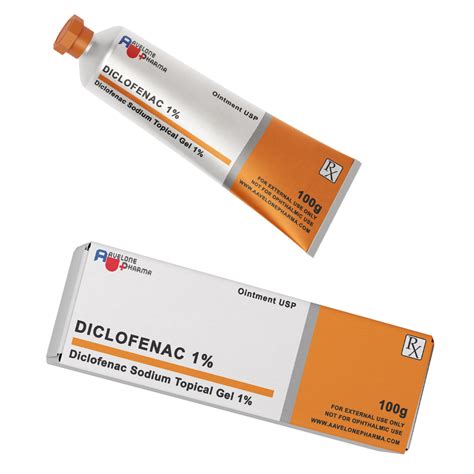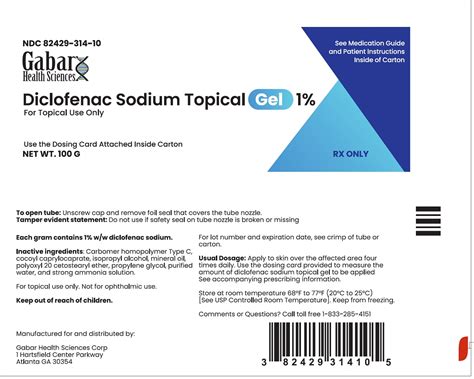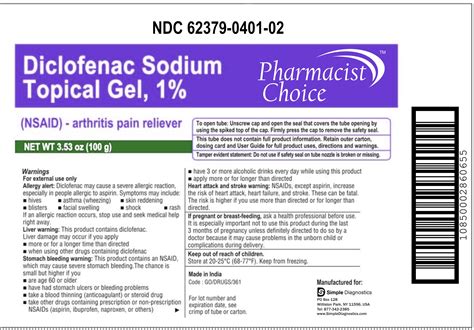Intro
Find fast relief with Diclofenac Sodium 1% Gel, a topical pain reliever for joint pain, arthritis, and inflammation, providing anti-inflammatory benefits and analgesic effects for sore muscles and sprains.
The world of pain relief is vast and varied, with numerous options available to individuals seeking to alleviate discomfort and inflammation. Among these options, topical treatments have gained popularity due to their targeted approach and minimal side effects. One such topical treatment that has been widely used for its effectiveness in providing relief from pain and inflammation is Diclofenac Sodium 1% Gel. This gel has been a staple in the management of conditions like osteoarthritis, actinic keratosis, and other inflammatory disorders. Understanding how Diclofenac Sodium 1% Gel works, its benefits, and how to use it effectively can provide valuable insights into its role in pain management.
The importance of effective pain management cannot be overstated. Chronic pain, in particular, can significantly impact an individual's quality of life, affecting not only their physical well-being but also their mental health and social interactions. The search for a reliable and safe method of pain relief has led many to explore topical treatments like Diclofenac Sodium 1% Gel. This gel offers a localized approach to pain relief, reducing the risk of systemic side effects associated with oral medications. Its mechanism of action, which involves the inhibition of cyclooxygenase (COX) enzymes, thereby reducing prostaglandin synthesis, is crucial in understanding its efficacy in alleviating pain and inflammation.
As individuals seek more targeted and safer alternatives for managing pain, the demand for comprehensive information on treatments like Diclofenac Sodium 1% Gel has increased. This includes understanding the gel's composition, its application, potential side effects, and interactions with other medications. Moreover, the role of Diclofenac Sodium 1% Gel in managing specific conditions, such as osteoarthritis of the hands, knees, or ankles, and its comparison with other topical pain relief options, are areas of interest for both healthcare professionals and patients. By delving into these aspects, individuals can make informed decisions about their pain management strategies, ensuring they opt for the most effective and appropriate treatment for their needs.
Diclofenac Sodium 1% Gel: Mechanism of Action

Benefits of Diclofenac Sodium 1% Gel
The benefits of using Diclofenac Sodium 1% Gel are multifaceted. It offers a non-invasive, topical solution for pain management, which is particularly appealing for individuals who prefer to avoid oral medications or have experienced adverse effects from them. The gel's targeted action ensures that the active ingredient, diclofenac sodium, is delivered directly to the site of pain or inflammation, enhancing its efficacy. Additionally, Diclofenac Sodium 1% Gel is often prescribed for its ability to manage pain with minimal risk of addiction, a significant concern with some oral pain medications.Using Diclofenac Sodium 1% Gel Effectively

Potential Side Effects and Interactions
While Diclofenac Sodium 1% Gel is generally well-tolerated, it can cause side effects, including skin reactions at the site of application, such as redness, itching, or burning. Less commonly, it may interact with other medications, including oral nonsteroidal anti-inflammatory drugs (NSAIDs), blood thinners, and certain medications used to treat diabetes or high blood pressure. It is essential for patients to discuss their medication regimen with their healthcare provider before starting Diclofenac Sodium 1% Gel to minimize the risk of adverse interactions.Diclofenac Sodium 1% Gel for Specific Conditions

Comparison with Other Topical Pain Relief Options
When considering topical pain relief options, individuals often compare Diclofenac Sodium 1% Gel with other available treatments, such as capsaicin cream, lidocaine patches, or methyl salicylate. Each of these options has its unique mechanism of action, benefits, and potential side effects. For instance, capsaicin cream works by depleting substance P, a neurotransmitter involved in pain transmission, while lidocaine patches provide localized numbing. Understanding the differences between these options can help individuals and healthcare providers make informed decisions about the most suitable treatment for specific conditions and patient needs.Practical Considerations and Precautions

Long-Term Use and Safety
The long-term safety of Diclofenac Sodium 1% Gel has been a subject of interest, with studies indicating that it can be used safely for extended periods when applied as directed. However, prolonged use can increase the risk of systemic absorption and potential side effects. Regular monitoring by a healthcare provider is recommended for patients using the gel long-term, especially if they have underlying health conditions or are taking other medications that may interact with diclofenac sodium.Conclusion and Future Perspectives

Engaging with the Community
We invite readers to share their experiences with Diclofenac Sodium 1% Gel, ask questions, or discuss their preferred methods of pain management. Your input is invaluable in fostering a community that prioritizes informed healthcare decisions and supports individuals in their journey towards effective pain relief. Whether you are a patient, a healthcare provider, or simply someone interested in learning more about Diclofenac Sodium 1% Gel, we encourage you to engage with this topic further, exploring the many resources available and contributing to the ongoing conversation about pain management and wellness.What is Diclofenac Sodium 1% Gel used for?
+Diclofenac Sodium 1% Gel is used for the treatment of osteoarthritis of the hands, knees, or ankles, and for the management of actinic keratosis.
How does Diclofenac Sodium 1% Gel work?
+Diclofenac Sodium 1% Gel works by inhibiting the production of prostaglandins, which are key players in the inflammation process, thereby reducing pain and inflammation.
What are the potential side effects of Diclofenac Sodium 1% Gel?
+Potential side effects include skin reactions at the site of application, such as redness, itching, or burning, and less commonly, interactions with other medications.
